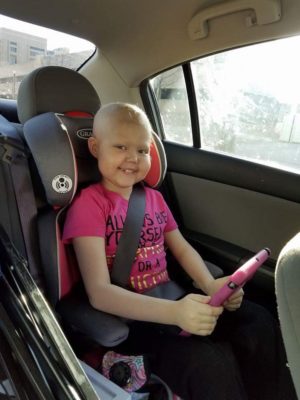The MastAttack 107: The Layperson’s Guide to Understanding Mast Cell Diseases, Part 3
I have answered the 107 questions I have been asked most in the last four years. No jargon. No terminology. Just answers.
6. What symptoms does mast cell disease cause?
- Mast cell disease can cause just about any symptom. Seriously.
- Mast cell disease can cause symptoms in every system of the body. This is because mast cells are found in tissues throughout the body. They are intimately involved in lots of normal functions of the human body. When mast cells are not working correctly, lots of normal functions are not carried out correctly. When this happens, it causes symptoms. In short, mast cells can cause symptoms anywhere in the body because they were there already to help your body work right.
- Skin symptoms can include flushing, rashes, hives (urticaria), itching, blistering, and swelling under the skin (angioedema).
- GI symptoms include nausea, vomiting, diarrhea, constipation, problems with the GI not moving correctly in general (GI dysmotility), swelling of the GI tract, chest and abdominal pain, belching, bloating, discolored stool, excessive salivation, dry mouth, and trouble swallowing.
- Cardiovascular symptoms include high or low blood pressure, fast or slow heart rate, irregular heartbeat, and poor circulation.
- Neuropsychiatric symptoms include brain fog, difficulty concentrating, difficulty sleeping at night, excessive tiredness during the day, grogginess, anxiety, depression, tremors, numbness, weakness, burning and tingling (pins and needles), hearing loss, and auditory processing (difficulty understanding what was said to you).
- Genitourinary symptoms include bladder pain, painful urination, painful intercourse/sexual activities, painful or irregular menstrual cycle (periods), and excessive or inadequate urination (too much or too little urine produced).
- Respiratory symptoms include cough, excessive phlegm, wheezing, runny nose, sinus congestion, sneezing, and swelling of the airway.
- General symptoms include fatigue, lack of stamina, difficulty exercising, itchy or watery eyes, and bruising easily.
- There are some additional symptoms that I have observed in a large number of people that are not classically considered mast cell symptoms, but I now firmly believe them to be. One is fever. I think discoloration of the skin may be mast cell related for some people. Another is dystonia, involuntary muscle contraction, which can mimic appearance of a seizure. There are also different seizure-type episodes that may occur due to the nervous system being overactive. I am reluctant to call them pseudoseizures because that term specifically means they are caused as a result of mental illness. I have no evidence that these seizure-type episodes in mast cell patients occur due to mental illness. I personally refer to them as “mast cell derived seizures.” (For people who are wondering, I have been heavily researching this phenomenon and have some theories about why this happens. It’s not fleshed out enough yet to post but it’s on my think list.)
- Having mast cell disease can make you more likely to have other conditions that cause symptoms.
- I’m sure there are other symptoms I have forgotten to mention.
7. Why are skin and GI symptoms so common?
- The skin has a lot of mast cells relative to other tissues. Your skin also comes into contact with lots of things in the environment. Think about the things your skin touches on a daily basis! It makes sense that it would get the exposure so skin symptoms can be common. Additionally, some of the chemicals mast cells release can cause fluid to become trapped in the skin. For these reasons, symptoms affecting the skin are pretty common.
- The GI tract also has a lot of mast cells relative to other tissues. Your GI tract also comes in contact with lots of things in the environment. Let’s think about this for a minute. Your GI tract is essentially one long tube through your body. You put things from the environment in your GI tract at the top and they come back out the bottom of the tract. In a way, your GI tract is kind of like the outside of the inside of your body.
- This is the analogy I learned in anatomy and physiology class to visualizing the GI tract as the outside of the inside of the body. Think of the body as a donut. (A low histamine, fully allergy friendly, requires no GI motility, wonderful donut.) Now think of the GI tract as the donut hole. You can put your finger through the hole in the middle of the donut. Only that center part of the donut will touch your finger. This is kind of like putting food throughout the GI tract. That food only touches a very small part of the body as it passes through.
- Since what we put into our mouths (or other GI openings) is from the outside, your body has many mast cells in the GI tract to protect the body. Some of the chemicals mast cells release can cause fluid to become trapped in the layers of GI tissue. Some of the medications we take for mast cell disease can affect the GI tract. Some of them change how much acid we make in our stomachs. Some of them slow down the GI tract. A few of them speed it up or make the GI tract more fragile. For these reasons, symptoms affecting the GI tract are very common.
For more detailed reading, please visit these posts:
The Provider Primer Series: Management of mast cell mediator symptoms and release
The Provider Primer Series: Mast cell activation syndrome (MCAS)
The Provider Primer Series: Cutaneous Mastocytosis/ Mastocytosis in the Skin
The Provider Primer Series: Diagnosis and natural history of systemic mastocytosis (ISM, SSM, ASM)
